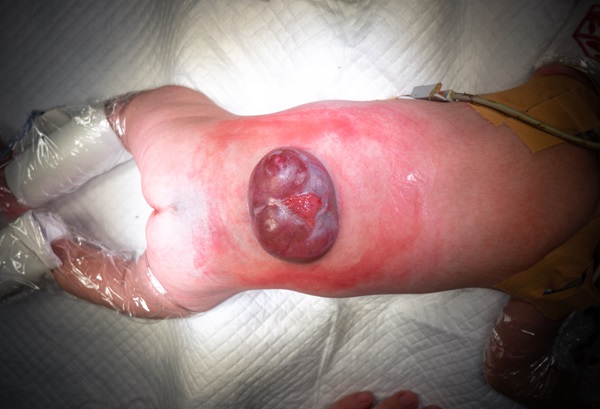With pediatric neurosurgery, it is possible to address medical issues or certain health problems so they do not impact a child's development. Pediatric spina bifida treatment can require a comprehensive plan that may include surgery soon after birth. While this can be scary for new parents, understanding the condition and treatment can help ease fears. It also helps to know that the child is in good hands with a pediatric neurosurgeon.
Overview of spina bifida
Spina bifida, or “split spine,” is a congenital abnormality in which the spine does not develop right in the womb. This leads to a gap in the spine, allowing part of the spine or its protective covering to protrude out. It occurs most frequently in the lower back, but it can occur anywhere along the spine. Spinal bifida can be so mild it does not cause symptoms or require treatment. However, it can be so severe it leads to nerve damage and complications like paralysis. The more severe the case, the more likely it is to require surgical intervention followed by lifelong care.
Role of a pediatric neurosurgeon
A pediatric neurosurgeon is a highly trained surgical specialist who corrects problems of the brain, spine, and nervous systems in infants and children. In some cases, they may work as part of a multi-disciplinary team. However, their chief role in pediatric spina bifida treatment is to correct this defect in the spine and treat secondary complications. A pediatric neurosurgeon strives to repair the spine and limit the long-term negative effects of the condition, improving the child’s quality of life.
Surgical interventions
The surgical intervention required for pediatric spina bifida treatment varies, but a pediatric neurosurgeon may perform the following procedures.
Initial surgery to repair the spine defect
Babies born with spinal nerves and membranes protruding through the opening in the spine will need surgery to correct these defects to help prevent infection and limit nerve damage. During this surgery, the pediatric neurosurgeon carefully places the spinal nerves and membranes back into the spine and closes the muscles and skin around it. This surgery is usually completed in the first 48 hours of the infant’s life.
Surgery to treat hydrocephalus
Hydrocephalus is a serious condition characterized by a buildup of fluid in the brain that creates pressure in the head. It is common in babies with the more severe form of spina bifida and can lead to brain damage. To relieve this pressure, a pediatric neurosurgeon will implant a shunt, a flexible tube that diverts the fluid from the brain to another part of the body, such as the abdomen, where it can be absorbed.
Tethered cord surgery
A tethered spinal cord means the cord is attached to surrounding tissues, restricting its movement. This can lead to neurological damage, causing weakness, numbness, and other complications. Therefore, a pediatric neurosurgeon will need to perform surgery to free the spinal cord from these restricting attachments. According to the American Association of Neurological Surgeons, about 20-50% of children with spina bifida defects repaired shortly after birth require further surgery to untether their spinal cord.
More on pediatric neurosurgery for spina bifida
Dr. William G. Loudon, Pediatric Neurosurgery brings years of experience to providing state-of-the-art neurosurgery for infants and children. Your child is in good hands with our caring team. Call us today to learn more about pediatric spina bifida treatment.
Request an appointment here: https://www.drloudonpediatricneurosurgery.com or call Dr. William G. Loudon, Pediatric Neurosurgery at (714) 677-9463 for an appointment in our Orange office.
Check out what others are saying about our services on Yelp: Pediatric Spina Bifida Treatment in Orange, CA.
Related Posts
General Tips From a Brain Surgeon for Brain Surgery Aftercare
Brain surgery is a complex and delicate procedure. It requires strict aftercare to ensure optimal recovery and few complications. Following the advice of your brain surgeon can help aid your healing process …
Exploring Options in Pediatric Brain Tumor Treatment
Pediatric brain tumor treatment is a highly specialized field that requires a multidisciplinary approach to ensure the best possible outcomes. Brain tumors are among the most common solid tumors in children, and …
FAQs About Hydrocephalus Treatment
Hydrocephalus affects people of all ages. Whether you are a parent concerned about your infant or are an adult with this condition, you likely have questions about hydrocephalus treatment. There are a …
How Minimally Invasive Neurosurgery Reduces Recovery Time
Minimally invasive neurosurgery brings minimal recovery time, improves comfort, and lowers risks associated with traditional procedures. With techniques like smaller incisions, faster healing, and precise interventions, these advanced methods provide effective treatment …


